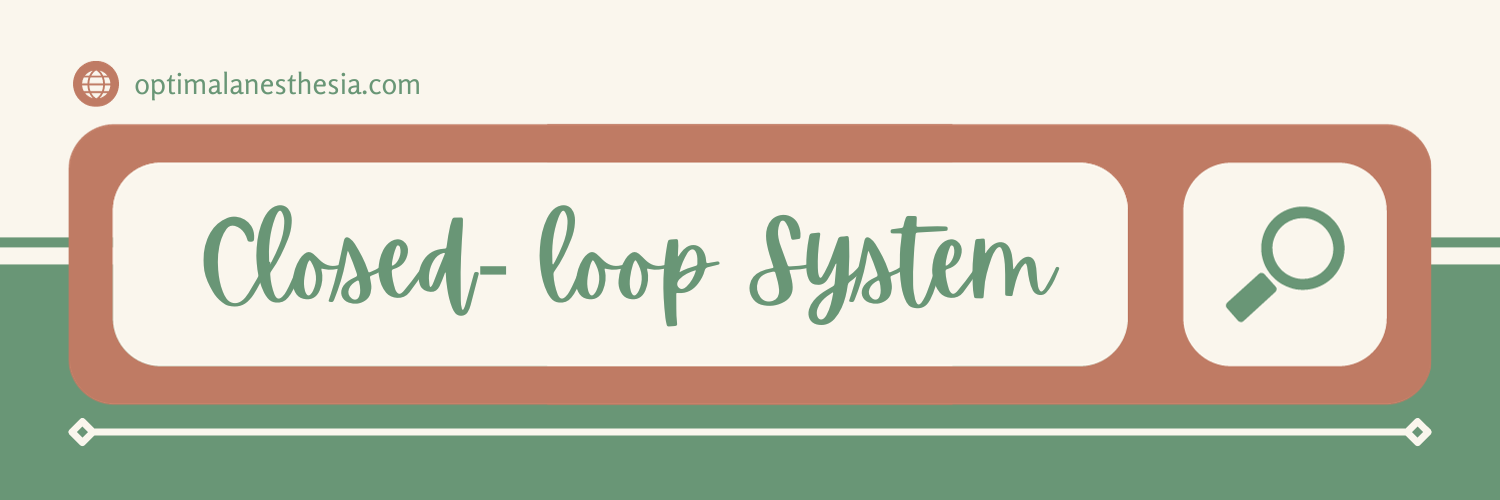In the realm of modern medicine, technological innovation continues to transform the landscape of healthcare. Anesthesia, a pivotal component of surgical procedures, is not exempt from these revolutionary advancements. Among the remarkable breakthroughs in anesthesia, the integration of closed-loop systems has emerged as a transformative force in optimizing patient care during surgery. This article explores how closed-loop systems have evolved over time, reshaping anesthesia management, including ventilation, fluid, and drug delivery, and highlights the advantages and challenges of these advancements.
The Multifaceted World of Closed-Loop Systems
Components of Early Closed-Loop Systems:
| Component | Early Description |
|---|---|
| Monitoring Devices | Early closed-loop anesthesia systems relied on basic monitoring devices like ECGs and pulse oximeters, providing limited real-time vital sign tracking. |
| Control Algorithms | Initial control algorithms were rudimentary and lacked the sophistication of modern systems, primarily focusing on simple dosing adjustments. |
| Drug Delivery Systems | Early systems used basic infusion pumps, with manual adjustments made by anesthesiologists during surgery. |
Advancements Leading to Modern Closed-Loop Systems:
Closed-loop anesthesia systems have come a long way since their inception. Advancements in technology and medical science have significantly improved their components:
| Component | Modern Description |
|---|---|
| Monitoring Devices | Today’s closed-loop systems rely on advanced monitoring devices, including ECGs, pulse oximeters, capnographs, and depth of anesthesia monitors, offering comprehensive real-time vital sign tracking. |
| Control Algorithms | Modern systems incorporate sophisticated control algorithms based on pharmacokinetics and pharmacodynamics, enabling precise and dynamic dosing adjustments. |
| Drug Delivery Systems | Drug administration is now orchestrated through advanced infusion pumps or syringe drivers, intricately linked to the closed-loop system, facilitating automatic drug delivery rate adjustments based on feedback. |
Ventilation Management in the Closed-Loop
| Aspect | Early Closed-Loop Systems | Modern Closed-Loop Systems |
|---|---|---|
| Ventilation Mode | Limited control options with basic settings | Advanced closed-loop mode (smart ventilation control) |
| Tidal Volume | Fixed tidal volume settings | Adaptive tidal volume (6 to 8 ml/kg predicted body weight) |
| Respiratory Rate | Limited adjustments | Adjusted to maintain predefined ETco2 targets (32 to 38 mmHg) |
| Positive End Expiratory Pressure (PEEP) | Basic or no PEEP | Consistently applied for lung protective ventilation strategy |
| Recruitment Maneuvers | Rarely utilized | Automatic control and optimization |
Fluid Management in the Closed-Loop
| Aspect | Early Closed-Loop Systems | Modern Closed-Loop Systems |
|---|---|---|
| Fluid Type and Amount | Limited options and manual discretion | Maintenance balanced crystalloid solution (Plasmalyte) at 3 ml/kg/h + Goal-directed fluid therapy (additional boluses) |
Advantages of Modern Closed-Loop Systems Integration:
- Precision and Consistency: Modern closed-loop systems offer unprecedented precision in anesthesia management, ensuring patients consistently receive the appropriate amount of anesthesia throughout the procedure, leading to smoother inductions and recoveries.
- Reduced Human Error: Automation has significantly reduced the risk of human error in drug administration, minimizing the potential for under-sedation or over-sedation. Anesthesia providers can now focus more on other aspects of patient care while confidently entrusting the closed-loop system to maintain optimal sedation levels.
- Optimal Drug Utilization: These advanced systems optimize drug usage efficiently, potentially reducing the overall amount of anesthetic agents required for a procedure. This results in cost savings and a significant decrease in drug-related side effects.
Challenges and Considerations in Modern Closed-Loop Systems:
- Algorithm Accuracy: The effectiveness of modern closed-loop systems still relies heavily on the accuracy of the pharmacological algorithms. Rigorous testing and validation continue to be essential to ensure patient safety.
- Individual Variability: Patients may still exhibit varying responses to anesthesia drugs due to differences in metabolism and sensitivity. Modern closed-loop systems have made strides in accounting for this individual variability in their pharmacological calculations.
- User Training: Anesthesia providers and medical staff require thorough training to understand and operate modern closed-loop systems effectively. This includes knowledge of integrating pharmacological principles into system management.
- Integration with Existing Equipment: Implementing modern closed-loop systems may require seamless integration with existing anesthesia machines and monitoring equipment in the operating room.
Precision with Remifentanil and Propofol
| Aspect | Early Closed-Loop Systems | Modern Closed-Loop Systems |
|---|---|---|
| Drug Delivery System | Basic infusion pumps | Base Primea infusion pumps (Fresenius Kabi, Belgium) connected to Infusion Toolbox 95 software |
| Algorithm Type | Simple algorithms with limited adaptability | Dual proportional-integral-derivative algorithm |
| Drug Administration | Basic control of drug infusion rates | Target-controlled infusion of propofol and remifentanil to maintain BIS values between 40 and 60 |
Embracing the Future
Closed-loop systems integration in anesthesia has evolved tremendously over the years, promising enhanced patient safety, improved outcomes, and greater operating room efficiency. As technology continues its relentless advance, modern closed-loop systems are set to play an even more pivotal role in modern anesthesia practice, offering precision and patient-centric approaches to intravenous anesthesia.
Disclaimer: The evolution of closed-loop systems integration and its components has progressed significantly since the last knowledge update in September 2021. Consult more recent sources for the latest information.


